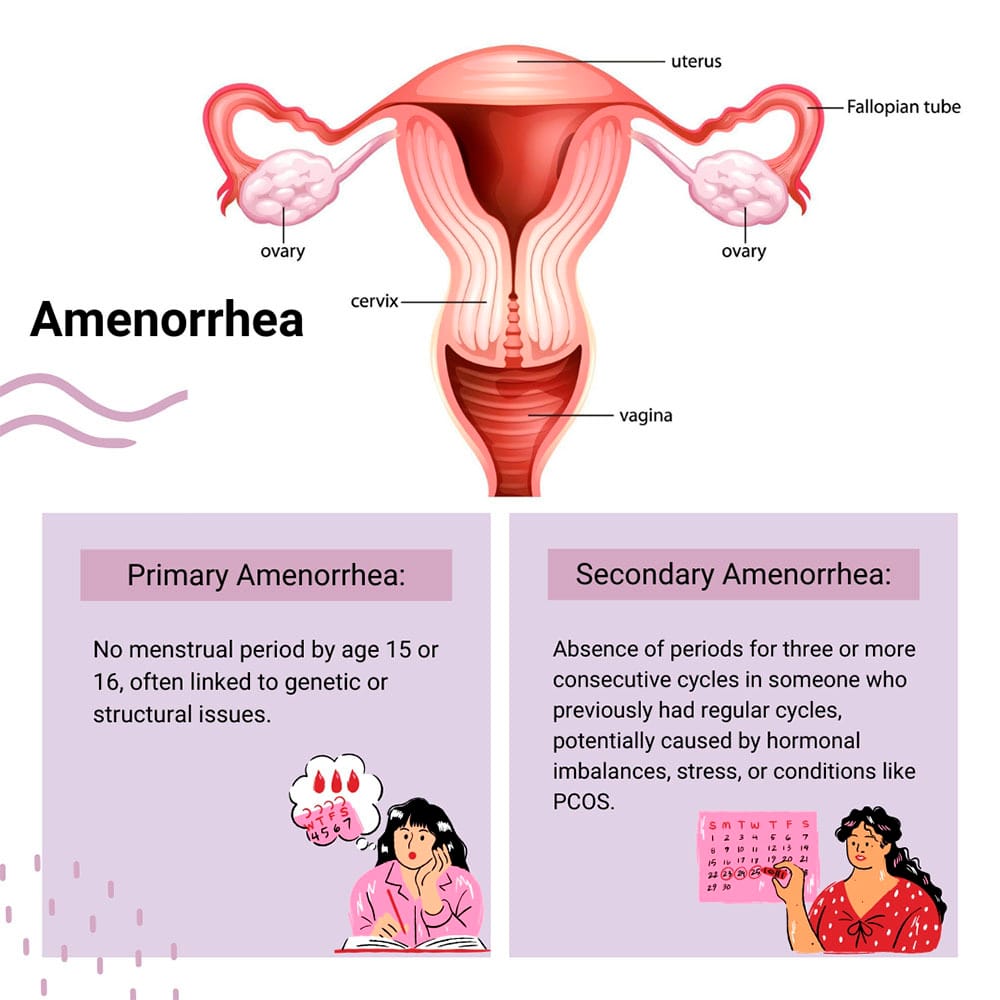What Is Amenorrhea?
Amenorrhea, also known as the absence of menstruation, is when your period doesn’t happen during your reproductive years, between puberty and menopause. When you’re healthy, every month your hormones prepare your uterus for a pregnancy. If there is no pregnancy, you shed the uterine lining; that shedding constitutes the blood that makes up your period.
Amenorrhea doesn’t necessarily mean you’re infertile, but it’s a sign of something that needs to be checked by your doctor.
It’s divided into two types:
- Primary amenorrhea
- Secondary amenorrhea
Amenorrhea may cause pelvic pain and can be a symptom of polycystic ovary syndrome (PCOS). If you’ve missed your period more than three times or haven’t even gotten your period by the time you’re 15, then it’s time to get checked for this condition. Cohen Medical Practice (CMP) in NYC is an experienced medical team specializing in reproductive issues. Led by board-certified obstetrician-gynecologist Dr. Felix Cohen, CMP ensures your well-being and comfort.

What Does Primary Amenorrhea Look Like?
Primary amenorrhea is when periods are absent in a girl by the age of 15 or 16. Symptoms other than missed periods may include delayed breast development and public hair. Some types of ovarian cysts related to PCOS may lead to primary amenorrhea.
Based on underlying medical issues, primary amenorrhea is divided into categories that include:
- Genetic or chromosomal issues, such as turner syndrome or androgen insensitivity syndrome
- Congenital hypothalamic amenorrhea or pituitary disorder like Kallmann syndrome or congenital hypothalamic dysfunction
- Structural issues of the reproductive systems that involves Mullerian agenesis, imperfect hymen or transverse vaginal septum
- Ovarian disorders that may present as premature ovarian failure or polycystic ovary syndrome
- Endocrine-related issues such as congenital adrenal hyperplasia, hypothyroidism or hyperthyroidism
Depending on the type of primary amenorrhea, it may be caused by different factors that affect the development of your reproductive system or hormone levels. Ovarian tumors may also result in amenorrhea.
Other common causes include:
- Chromosomal disorders that cause incomplete ovarian development
- Absence of a developed vagina or uterus
- Suppression of hormones due to stress, weight loss or too much exercise
- Early ovarian failures
- Hymen covering the vaginal opening and blocking the period flow
- Disfigurement of the uterus or the cervix
- Medications like anti-psychotics, chemotherapies or even allergy medicines
What Is Secondary Amenorrhea?
Secondary amenorrhea is the absence of your periods for three or more consecutive cycles. Before these missed cycles, you may have had regular periods. Conditions like uterine fibroids cause heavy bleeding, which may lead to secondary amenorrhea. Symptoms other than missed periods may also include hot flashes, night sweats, vaginal dryness, weight changes, hair growth and acne. It can also cause PCOS in some women.
Secondary amenorrhea is divided into categories based on the cause, such as:
- Hypothalamic amenorrhea. This is an absence of periods because of disturbance in the hypothalamus from excessive exercising, also known as exercise-induced amenorrhea.
- Pituitary amonerreah. Problems in pituitary glands impact hormone regulation, which is important for periods.
- Endocrine disorders. Hormonal imbalance because of conditions like thyroid issues or adrenal issues can stop your periods.
- Medicines and treatments. Period problems caused by medications or therapies like chemotherapy or hormonal treatment can lead to amenorrhea. It often occurs after taking oral contraceptive pills, which is called post-pill amenorrhea.
- Lactational amenorreah. The absence of your periods during the time you’re breastfeeding is another source of the secondary condition.
Recognizing the cause is important as it plays a role in determining the approach for your treatment. In many cases, amenorrhea and pregnancy are very common as menstruation stops during those nine months.
Other causes may include:
- Hormonal imbalance
- Stress
- Weight loss
- Anorexia
- Uterine abnormalities
- Autoimmune disorders
- Previous surgeries like dilation and curettage
How Is Amenorrhea Diagnosed?
Amonerreah is diagnosed through a combination of different diagnostic tools. The first and most important step is to provide your doctor with a history of your menstrual cycles and developmental milestones. This may include talks about lifestyles, changes, family history and other associated symptoms.
Other diagnostic methods include:
- Evaluating signs of hormonal imbalances, and delayed puberty anatomical issues
- Doing physical and pelvic exams
- Looking for secondary sexual characteristics
- Taking a pregnancy test to rule it out as a cause
- Measuring estrogen, progesterone, FSH and LH through blood tests
- Evaluating prolactin and thyroid hormones
- Doing ultrasounds to look at the uterus and ovaries to rule out cysts or fibroids
- Doing an MRI if there is any issue with the pituitary gland
- Genetic screening to look for chromosomal and genetic conditions
Sometimes the cause of amenorrhea isn’t obvious like pregnancy or menopause and no other signs are connecting. For more information, your doctor might ask you to record your period dates and changes in your menstrual cycle.
How Is Amenorrhea Treated?
Treatment for amenorrhea depends on the type you have, which is why the diagnosis is important. Estrogen replacement therapy may be used if there’s a lack of estrogen due to chromosomal disorders in primary amenorrhea.
Other treatment options include:
- Surgery. For structural issues in the organs, uterine abnormality surgery may be used.
- Managing weight. For people with low body weight or other eating disorders, managing weight might help.
- Treating other medical issues. Medicines are given to treat PCOS and thyroid disorders. Prolactin levels are also reduced for hyperprolactinemia through medication.
- Hormonal treatment. Taking birth control pills to regulate your periods and taking progesterone therapy to cause a period could be all you need.
- Managing stress. Counseling or therapy to manage your stress or any emotional issues you might be having can trigger a healthy physical response.
While you may dislike your periods or suffer with PMS, not getting a period is still a medically concerning issue. If you’ve uncharacteristically missed your period for more than three months or haven’t even gotten it by your mid-teens, then you need to contact Cohen Medical Practice (CMP) immediately to resolve this issue. Untreated amenorrhea can lead to serious consequences, including infertility.

